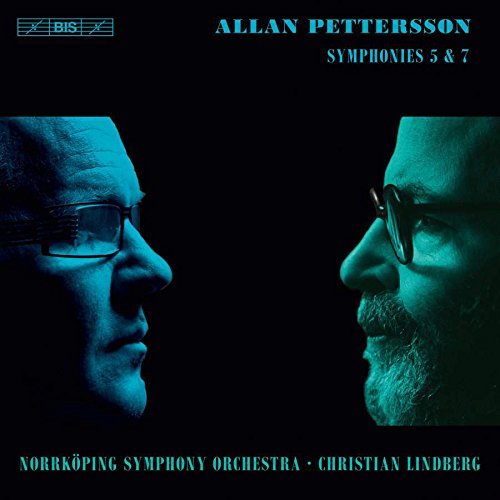 Allan Pettersson, Symphonies 5 & 7, Christian Lindberg, Norrköping Symphony Orchestra BIS |
Pettersson writes riveting symphonies that develop slowly but effectively. He likes the space the form symphony affords him and explores it. Without movements, they are one continuous development… more (the Fifth) or less (the Seventh) dividable into distinct sections, which puts Pettersson, at least superficially, in the proximity of Sibelius’ Seventh Symphony. The spirit of Mahler’s Tenth breathes through large swaths. Although reasonably successful and earning him a lifetime stipend from the Swedish Government, his Fifth Symphony (as well as previous and subsequent works) was panned by critics for not really being modern at all. His use of tonality and consonance offended the academic sensibilities of the time.
Still, neither the Fifth nor the Seventh – as close to a blockbuster as Petterson ever wrote and much promoted by Antal Doráti – are ever easy-listening. The Fifth starts with beguiling and fragile, faintly reminiscent of Charles Ives’ Unanswered Question. It’s as if all the suffering in Bernd Alois Zimmermann’s music was expressed with the means of Henryk Gorecki’s Third Symphony. The Seventh, even more than other Pettersson symphonies, is riveting and grueling, damn serious, with a grim view of the human condition and a severe grip on the listener’s lapels. Intermittently the sky brightens through waltzing elements: a mix of respite and wistfulness. With hypnotic energy, the work moves along a path of slow, ever-increasing tension – like the best of a Shostakovich slow movement. “Lindberg builds those long, tense climaxes with greater clarity and no loss of sheer power.” (Hurwitz)
Indeed, Lindberg, the Norrköping Symphony Orchestra and BIS Records have devoted themselves to the “Allan Pettersson Project” which intends to perform and record all of Pettersson’s important works in standard-setting interpretations. Despite the competition – even from the same orchestra on the same label – that seems to pan out nicely. Right behind the recording of the rather more optimistic of the Barefoot Songs (BIS 1690), this release – what with the two Symphonies being among the most accessible ones – is an ideal entry point into the sound world of Pettersson. Surprised-by-Beauty Music!

Follow @ClassicalCritic



No comments:
Post a Comment